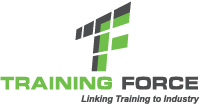By Daniel Orelowitz, Managing Director at Training Force
If you are running a business in South Africa and employing people, then you are probably familiar with the various taxes and levies that you are required to pay on a monthly basis, including the Skills Development Levy (SDL).
You are also likely to know that the SDL is a compulsory payment of 1% of your monthly payroll which gets paid over to the South African Revenue Service (SARS). You might even know that this money is then split between the different Sector Education and Training Authorities (SETAs) that your company is part of as a funding mechanism.
Yet, from personal experience, I can tell you that this is just about all that most companies know about the SDL – it’s a tax that is paid monthly and disappears into the ether. But do you actually understand why you are paying the SDL? And do you realise that this gives you access to funds for training?
Most employers probably don’t. The sobering fact is that the vast majority of South African employers do not use, understand or even know about the SDL, or that it entitles them to claim a portion of this money back from their SETA.
Money is tight
In a COVID-19-battered world, where cashflow is a challenge for many businesses, I know that this probably got your attention. In fact, SETAs have two grants from which employers can claim, and this essentially is a pool of funds that they have access to and are entitled to.
So firstly, we have the Mandatory Grant from which a company can claim back 20% of the 1% of payroll they paid over as their SDL. In simple terms, if you paid R100 000 in SDL, you get back R20 000. This might not be a massive amount, but as my dad always says: “Better in your back account than the taxman’s.”
Secondly – and this gets better – as an employer, you can also potentially receive Discretionary Grant (DG) funding from your SETA. All you need to do is apply for training interventions, be it learnerships, bursaries, skills programmes or internships. Since this is a discretionary grant, your SETA will determine your refund amount based on your application.
How do I get funding?
So why are you paying your SDL and not seeing a cent back? Well, to apply for the funding, companies must submit an Annual Training Report (ATR), which is based on the training that they conducted in the previous financial year. Additionally, you also have to submit a Work Skills Plan (WSP) which details your intended training over the next 12 months.
The annual deadline for claiming from the Mandatory Grant is 30 April, so your WSP and ATR must be submitted correctly by this date. There is no set deadline for DG funding applications, but each SETA will announce its own DG funding window for companies to apply. But to be able to apply for this funding, you need to have submitted your WSP and ATR by the deadline. What’s more, successful WSP and ATR submissions will gain you Black Economic Empowerment (BEE) skills development points. See where this is going?
Overwhelming process
Unfortunately, the honest truth is if you’re feeling overwhelmed by the mammoth task of fulfilling the procedural requirements of skills development, then you probably should. It is an onerous undertaking. So, how can you make your own life easier? You could hire or upskill someone to be a Skills Development Facilitator (SDF), who can do your applications for you.
On the other hand, you could use a consultant or specialist training company that is proficient in these processes and will ensure that everything is done and submitted properly – and let me just stress that getting it right is rather important. Due to the sheer volume of applications that the SETAs receive each year, those that are completed incorrectly simply get binned.
We find ourselves in economically turbulent times and a lot of businesses feel as though they cannot afford to spend money on training, because when budgets get slashed, skills and marketing get cut. But you also want your business to grow. Therefore, you have to ensure that your staff is reskilled, upskilled and tech-ready as needed. Thus, understanding and optimising your SDL has never been more important.
Feel free to reach out to me if you would like some advice on how you can leverage the benefits of paying your SDL, enabling you to make a difference and upskill your business.


How does the employee benefit from the SDL I pay every month but don’t get anything in return.
Please advise if I could claim for one of my unqualified agents to claim for the NQF4 & NQF5 programme for the real estate industry